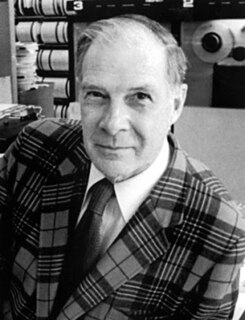 W
WSalman A. Avestimehr is a professor at the Electrical and Computer Engineering Department of University of Southern California, where he leads the Information Theory and Machine Learning (vITAL) research lab. Avestimehr's contributions in research and publications are in the areas of information theory, coding theory, and large-scale distributed computing and machine learning. In particular, he is best known for deterministic approximation approaches to network information theory and coded computing. He is currently a general co-chair of the 2020 International Symposium on Information Theory (ISIT) and a Fellow of IEEE. He is also co-authors of four books titled “An Approximation Approach to Network Information Theory”, “Multihop Wireless Networks: A Unified Approach to Relaying and Interference Management”, “Coded Computing”, and “Problem Solving Strategies for Elementary-School Math.”
 W
WElwyn Ralph Berlekamp was an American mathematician known for his work in computer science, coding theory and combinatorial game theory. He was a professor emeritus of mathematics and EECS at the University of California, Berkeley.
 W
WPeter Jephson Cameron FRSE is an Australian mathematician who works in group theory, combinatorics, coding theory, and model theory. He is currently half-time Professor of Mathematics at the University of St Andrews, and Emeritus Professor at Queen Mary University of London.
 W
WJohn Mathew Cioffi is an American electrical engineer, educator and inventor who has made contributions in telecommunication system theory, specifically in coding theory and information theory. Best known as "the father of DSL," Cioffi's pioneering research was instrumental in making digital subscriber line (DSL) technology practical and has led to over 400 publications and more than 100 pending or issued patents, many of which are licensed.
 W
WItalo Jose Dejter is an Argentine-born American mathematician, a retired professor of mathematics and computer science and a researcher in Algebraic topology, Differential topology, Graph theory, Coding theory and Design theory. He obtained a Licentiate degree in mathematics at University of Buenos Aires in 1967, arrived at Rutgers University in 1970 by means of a Guggenheim Fellowship and obtained there a Ph.D. degree in mathematics in 1975 under the supervision of Professor Ted Petrie, with support of the National Science Foundation. He was a professor at the Federal University of Santa Catarina, Brazil, from 1977 to 1984, with grants from the National Council for Scientific and Technological Development, (CNPq).
 W
WAndrew Mattei Gleason (1921–2008) was an American mathematician who made fundamental contributions to widely varied areas of mathematics, including the solution of Hilbert's fifth problem, and was a leader in reform and innovation in mathematics teaching at all levels. Gleason's theorem in quantum logic and the Greenwood–Gleason graph, an important example in Ramsey theory, are named for him.
 W
WRichard Wesley Hamming was an American mathematician whose work had many implications for computer engineering and telecommunications. His contributions include the Hamming code, the Hamming window, Hamming numbers, sphere-packing, and the Hamming distance.